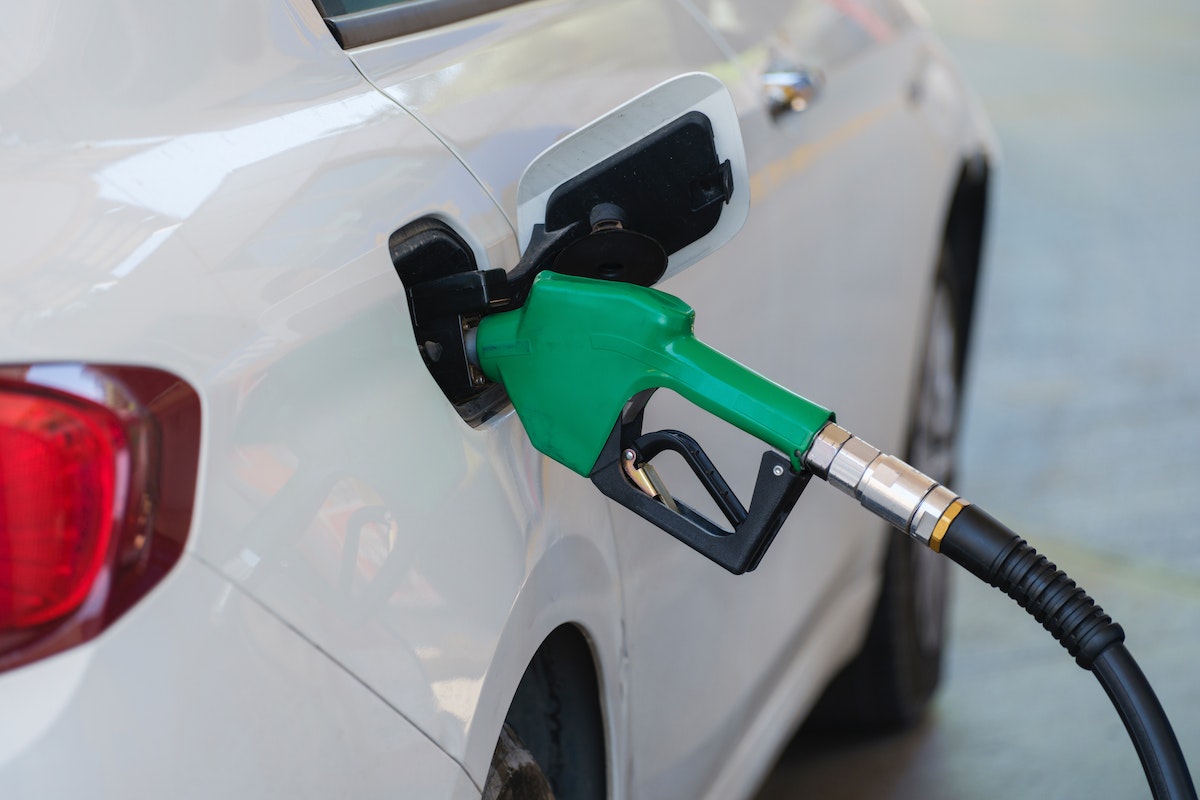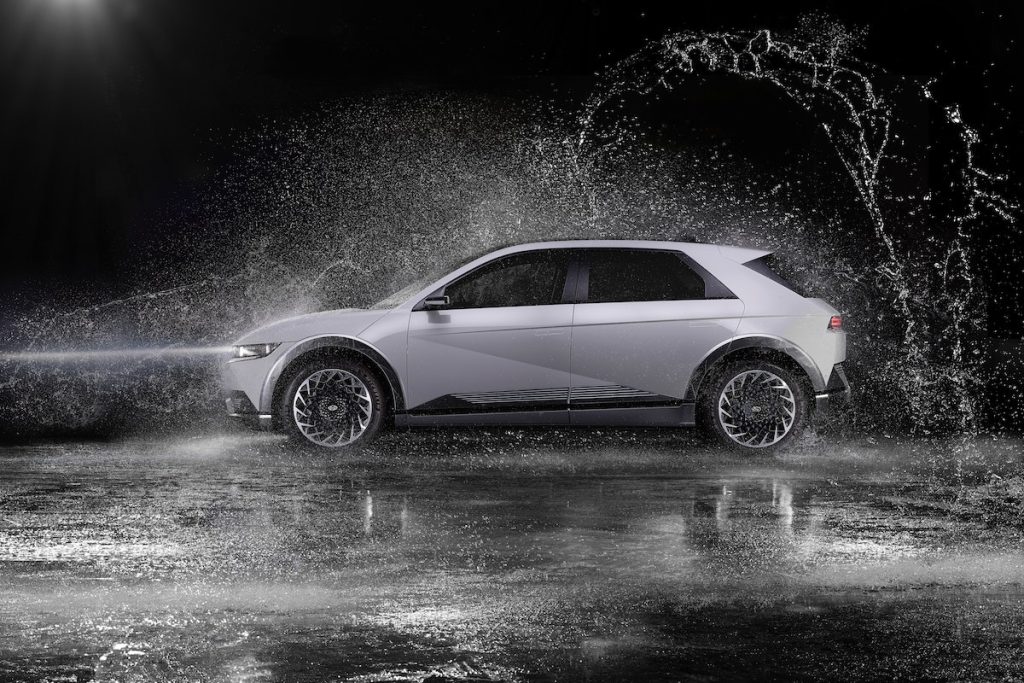Hydrogen cars are becoming increasingly popular due to their environmental friendliness and potential for reducing greenhouse gas emissions. Hydrogen fuel cells use hydrogen and oxygen to create electricity, which powers an electric motor, eliminating the need for a combustion engine that burns fossil fuels like gasoline or diesel. As a result of this clean energy production, hydrogen cars produce no emissions other than water vapor.
Hydrogen Council revealed that the number of fuel cell electric vehicles running on hydrogen could increase to 13 million by 2030, a significant rise from the current level of 16,000. This increase is expected due to the growth of the market and the reduction in costs. Additionally, the number of hydrogen refueling stations is expected to increase to over 10,000 by 2030, up from the current global count of 407.
Fuel cell cars use compressed hydrogen gas to power an onboard fuel cell stack that converts the fuel’s chemical energy into electrical energy instead of burning it. The electrical energy then drives the car’s electric motors. These cars produce no tailpipe emissions and only produce pure water as waste.
A fuel cell car is enjoyable to drive and has instant torque for consistent power. It is equipped with advanced technology and requires minimal maintenance. It also produces zero emissions and can be refueled quickly in three to five minutes. The car also has a high driving range and comes with access to carpool lanes and other benefits. Moreover, it has attractive lease pricing, often including free fuel and maintenance.
This article will give you an overview of hydrogen-powered fuel cell cars, how they run, hydrogen cars’ pros and cons, and how they compare to electric vehicles.
How Hydrogen Cars Work
Fuel cell electric vehicles (FCEVs) also use electricity like other electric vehicles. But they generate electricity using a fuel cell powered by hydrogen instead of relying solely on a battery. The size of the electric motor(s) in an FCEV is determined by the vehicle manufacturer based on the appropriate size of the fuel cell and battery combination to power it.
Basic Principles
FCEVs don’t have the option to charge the battery by plugging it in. Yet, they utilize the battery by capturing energy from braking, providing additional power during brief accelerations, and keeping a consistent power supply from the fuel cell. The fuel cell can be turned off or put on standby when there isn’t much demand for power.
The size of the hydrogen fuel tank determines the amount of energy that can be stored onboard. Unlike an all-electric vehicle, the battery’s size is key to the power and energy available.
Primary Components of a Hydrogen-Powered Fuel Cell Electric Car
- Auxiliary Battery – The low-voltage auxiliary battery in an electric vehicle is responsible for powering the vehicle accessories and starting the car before the traction battery takes over.
- Battery Pack – The battery with high voltage stores the energy produced through regenerative braking and supplements power to the electric traction motor.
- Cooling Thermal System – The system keeps the fuel cell, electric motor, power electronics, and other components within the appropriate temperature range.
- DC-to-DC Converter – The DC-to-DC converter lowers the high-voltage power of the traction battery. This power runs the vehicle’s accessories and recharges the auxiliary battery.
- Electric Traction Motor – The motor in the car utilizes power from the fuel cell and battery pack to drive the wheels. In some vehicles, there are motor generators that can both drive the car and regenerate energy.
- Electric Transmission – The transmission transfers mechanical power from the electric motor to propel the wheels.
- FCEV Power Electronics Controller – This unit regulates the distribution of electrical energy from the fuel cell and the traction battery. It controls both the speed and torque of the electric traction motor.
- Fuel Cell Stack – The stack is a collection of separate membrane electrodes that generate electricity by utilizing hydrogen and oxygen.
- Fuel filler – To fill a vehicle’s tank with fuel, the nozzle from a fuel dispenser should be attached to the receptacle on the car.
- Fuel tank – Place where the vehicle stores hydrogen gas until it is required by the fuel cell.
Popular Hydrogen Car Models
Many hydrogen fuel cars have not gained the same popularity as battery electrics on the roads; they are still creating a buzz in the news. Many car manufacturers are investing in developing these vehicles and creating impressive models.
- Toyota Mirai – Toyota was the first to lead the hybrid revolution with the Prius, and now they are the first to produce a hydrogen-powered car ready for sale with the Mirai. They started researching this vehicle in the early 1990s, showing their dedication to finding alternative fuels. The new design looks futuristic, and the interior resembles the Prius. The Mirai has a range of 400 miles.
- Toyota GR Yaris H2 – The GR Yaris, a prototype vehicle developed by Toyota, features an advanced hydrogen combustion engine technology that the company recently demonstrated. Although the fuel and fuel tanks used in the GR Yaris are similar to those found in Toyota’s electric cars with zero emissions, the former is powered by hydrogen instead of electricity. The technology is still being developed and has yet to be viable for commercial use. However, Toyota’s Corolla Sports car, which is powered by hydrogen, is impressing motorsports fans in Japan by emitting minimal pollution.
- Honda CR-V Hydrogen – Even though the Japanese company has not yet reached the same level as Toyota in the field of hydrogen-powered vehicles, they have partnered with General Motors to focus on a hydrogen-based future. As for now, they are releasing the CR-V Hydrogen, a hybrid version of one of their existing vehicles. This allows drivers to both recharge the car and use hydrogen fuel. The Ohio plant of Honda is scheduled to begin producing the CR-V Hydrogen in 2024.
- Land Rover Defender FCEV – The Jaguar Land Rover is currently developing a fuel cell electric vehicle (FCEV) as part of its net zero carbon emissions strategy. The FCEV is specifically designed for larger vehicles operating in all weather conditions. The new Defender, which already has impressive off-road capabilities, will be used as the base model for the FCEV, which is being developed in partnership with British specialists Marelli Automotive Systems.
- BMW iX5 Hydrogen – BMW has released images of their new iX5 Hydrogen SUV tested in icy conditions. The car is based on one of Munich’s existing premium SUVs and uses hydrogen cells that work well at all temperatures. BMW claims the car can travel over 300 miles and has a top speed of 118 mph. Although the vehicle has yet to be available for order, BMW’s financial resources suggest that production is likely.
Pros of Hydrogen Cars
Hydrogen cars or hydrogen fuel-cell vehicles (HFCV) offer many advantages over traditional gas-powered cars, including:
Environmentally Friendly
The use of hydrogen fuel cells produces a clean form of energy without causing any harm to the environment as it only emits heat and water as byproducts. Unlike biofuel or hydropower, hydrogen doesn’t need vast areas of land for production.
NASA has been researching the use of hydrogen as a resource. The water produced as a byproduct can be used as drinking water for astronauts. This suggests that hydrogen fuel cells are a better fuel source than coal, natural gas, and nuclear power as they are non-toxic and easier to obtain.
Using hydrogen in production, storage, and as an energy source will aid in advancing renewable energy. This is achieved by balancing the intermittent supply of renewable energy sources with the high demands of users without requiring significant initial investments to upgrade grid infrastructure.
Energy Efficiency
Compared to several energy sources, including several green options, hydrogen fuel cells are highly efficient at producing energy. This efficiency enables the production of greater energy per unit of fuel. Conventional combustion-based power plants have an efficiency of around 35 percent in generating electricity, while hydrogen fuel cells can achieve up to 65 percent efficiency. Similarly, in vehicles, fuel cells can use around 60 percent of the fuel’s energy and offer a 50 percent decrease in fuel consumption.

Fast Refueling
Hydrogen fuel cell power units can be charged much faster than battery-powered electric vehicles and just as quickly as conventional internal combustion engine (ICE) cars. While electric vehicles can take anywhere from 30 minutes to several hours, hydrogen fuel cells only take under five minutes to recharge. This fast charging time allows hydrogen-powered vehicles to offer the same flexibility as traditional cars.
Long Driving Range
Hydrogen fuel cells are more efficient and have the same range as fossil fuel vehicles (around 300 miles). This is better than electric vehicles (EVs) using fuel cell power units as range-extenders. Unlike EVs, Hydrogen fuel cells are unaffected by temperature and don’t deteriorate in cold weather. This advantage is even greater when combined with short charging times.
Renewable and Readily Available
Even though renewable energy sources are still scarce, it is possible to produce hydrogen fuel from renewable sources such as wind and solar power. Hydrogen can also be produced by splitting water molecules into oxygen and hydrogen with the help of electricity Additionally, hydrogen production from fossil fuels is more efficient than burning them directly, reducing emissions significantly.
No Visual Pollution
Both wind energy and biofuel power plants can be visually unappealing; hydrogen fuel cells require less space and therefore are not as visually intrusive.
No Noise Pollution
Compared to renewable energy sources like wind power, hydrogen fuel cells do not create noise pollution. This also means hydrogen-powered vehicles, like electric cars, are quieter than conventional internal combustion engines.
Cons of Hydrogen Cars
Even though hydrogen cars have a lot of advantages, they also have several drawbacks that should be considered before investing in one.
Limited infrastructure
The infrastructure for fossil fuels already exists since they have been used for many years. However, adopting hydrogen fuel cell technology for vehicles will require a new refueling infrastructure to support it. Start-to-end refueling will likely be used for long-range applications like HGVs and delivery trucks.
High cost
Making hydrogen fuel cells a practical energy source requires investment and political support for technology development and improvement. The main challenge is figuring out the most efficient and cost-effective way to gradually establish the supply and demand chain for sustainable hydrogen energy on a global scale.
At present, using hydrogen fuel cells to generate power is more expensive than other energy sources, such as solar panels. Although hydrogen is more efficient once produced, the higher cost hinders its widespread usage. This cost also affects other areas, such as the price of hydrogen vehicles, making it unlikely for them to be adopted widely at the moment. However, advancements in technology may decrease the cost in the future.
Production Challenges
Hydrogen is most commonly produced from natural gas, a non-renewable energy source, or by electrolysis. Currently, the process of electrolysis to produce hydrogen is expensive and requires a lot of electricity. Renewable sources such as solar and wind will need to be used to make them more cost-effective and sustainable.

Safety Concerns
Regulatory issues related to the commercial deployment models framework can also hinder. With clear regulatory frameworks to help commercial projects determine their cost and revenue basis, it can be easier for them to make a financial investment decision (FID).
When it comes to using hydrogen fuel cells as an energy source, it’s important to note that storing and transporting hydrogen is more complicated and costly than fossil fuels. Additionally, as hydrogen is highly flammable, safety concerns arise. Hydrogen gas can ignite in air at concentrations between 4 and 75 percent.
Comparison with Other Green Vehicle Technologies
Hydrogen fuel cells are not the only technology being explored for green vehicles. Hybrid and electric cars are some of the other popular options. The main difference is that while a hybrid car has an electric motor and an internal combustion engine, an electric vehicle (EV) runs exclusively on electricity generated from batteries or power stored in its onboard battery packs.

Hybrid and EVs
Hybrid cars and EVs offer environmental benefits such as lower emissions, but the fuel efficiency of hydrogen fuel cells is significantly higher. Hydrogen cars also provide more range compared to battery-powered EVs. Additionally, they can be refueled much faster than electric vehicles, making them a more practical option for long-distance travel.
New Technology
Hydrogen fuel cell vehicles are still relatively new technology, but they are gaining more attention as the world shifts to greener solutions. Fuel cells offer several advantages over other green technologies. If their cost can be reduced through research, then they could be a viable option for the future of transportation.
Pros and Cons of Each Technology
When considering the electric vehicles, hybrid, and hydrogen cars pros and cons, it’s crucial to take into account the advantages and disadvantages of each. Hydrogen fuel cells offer several benefits: zero emissions, high efficiency, fast refueling times, and long driving range. However, their cost is still higher than other technologies, and they require a new infrastructure for production and distribution.
Affordable and Low Emissions
Hybrid cars are more affordable and offer lower emissions than gasoline-powered vehicles. However, they lack the range of hydrogen fuel cells and are still dependent on fossil fuels for operation. Battery-electric cars provide zero emissions but require longer charging times, which can be a major inconvenience for some drivers.
Overall, each technology has advantages and disadvantages that should be carefully weighed before deciding on the best option for your needs. While hydrogen fuel cells are promising, it will still be long before they become widely available. Until then, hybrids and electric vehicles offer an effective alternative for drivers looking to reduce their emissions without sacrificing performance.
Hybrid cars and EV battery packs can also be powered by renewable sources such as solar or wind energy. This could further reduce emissions and provide an even more sustainable solution for drivers looking to reduce their environmental footprint.
Ultimately, the technology that best suits your needs will depend on factors such as cost, range, and convenience. As each green vehicle technology continues to improve, there is no doubt that people will continue to see more options emerge.
Government Initiatives and Support
The development of hydrogen fuel cell technology is still at a relatively early stage, and governments around the world are currently taking steps to promote wider adoption. In Europe, for example, the European Commission has launched several initiatives to accelerate the deployment of HFCV infrastructure.
The United States also has several initiatives, such as the US Department of Energy’s hydrogen and fuel cell technologies program, which provides funding for research and development in this field. Here is a summary of all federal laws and incentives for using hydrogen.
Alternative Fuel Corridor (AFC) Grants
The Department of Transportation must create a grant program to fund the installation of public charging stations and fueling infrastructure for alternative fuels such as hydrogen, propane, and natural gas. The grant will be given to designated highway corridors to transition them to Corridor-Ready AFCs, and to ensure they have redundant stations and enough infrastructure to meet higher demand.
Propane fueling infrastructure is restricted to medium- and heavy-duty vehicles, and states, metropolitan planning organizations, local governments, political subdivisions, and tribal governments can obtain it. There are additional requirements and eligibility for funding to consider. The grant program must be created by November 15, 2022, according to Public Law 117-58 and 23 US Code 151.
Alternative Fuel Infrastructure Tax Credit
You can get a tax credit for 30 percent of the cost (up to $30,000) if you install fueling equipment for electricity, propane, natural gas, E85, liquefied hydrogen, or diesel fuel blends containing at least 20 percent biodiesel. Inspection and permit fees are not part of the covered expenses.
Owners of fueling stations can receive credits for installing qualified equipment at multiple locations. These credits can be used at each site. If any unused credits meet the definition of general business tax credits established by the IRS, they can be carried back one year and carried forward for up to 20 years. Consult IRS Form 8911 on the IRS Forms and Publications website for more information on claiming the credit.
Alternative Fuel Tax Exemption
When alternative fuels are used in a way the IRS considers nontaxable, they won’t be subject to federal fuel taxes. The vehicles can be used in a nontaxable manner for certain purposes such as farming on a farm, transportation on certain intercity and local buses, school buses, for the exclusive use of a nonprofit educational organization, or the exclusive use of a state, political subdivision of a state, or the District of Columbia.
Tax-exempt entities that do not have to pay excise taxes on transportation fuel are not eligible for this exemption. You can find additional details in IRS Publication 510(PDF). (Reference 26 US Code 4041).
Government Infrastructure Grants
The US Department of Transportation’s Federal Highway Administration runs the CFI Program, which offers grants for setting up alternative fueling and electric vehicle charging stations in urban and rural areas along Alternative Fuel Corridors (AFC). They have two types of funding- Alternative Fuel Corridor Grants and Community Charging and Fueling Grants.
The Community Program can help fund infrastructure projects that must be put in public places like roads, buildings, schools, parking lots, or parks. The program prioritizes communities with lower incomes, less access to resources, small towns, and crowded areas. The Corridor Program offers grants to organizations like planning groups, governments, and public authorities for infrastructure projects on certain AFCs.
Current Challenges and Future Outlook
Despite the advantages of hydrogen fuel cell vehicles, significant challenges still need to be addressed before they can become a viable alternative for drivers. These include cost and infrastructure issues, as well as safety concerns.
Investments and Support
For now, the development of hydrogen fuel cells is heavily reliant on public and private investments and regulatory support from governments worldwide. For this technology to be widely adopted, it will require research and development and the gradual build-up of infrastructure. Most importantly, cost-effective production methods must be established for hydrogen fuel cells to become a viable alternative.
More Hydrogen-Powered Cars
In the future, people can expect to see more hydrogen cars on the roads as technology improves and costs come down. With new government initiatives and support, more people may be encouraged to switch to this green vehicle technology. This could significantly contribute to reducing emissions and helping the world transition to a greener future.
The future of hydrogen fuel cells looks promising as governments and organizations around the world continue to invest in this technology. With further technological advancements and cost reductions, these renewable energy sources may one day become viable for drivers looking to reduce their environmental impact.
Overall, hydrogen fuel cell vehicles offer advantages over other green vehicle technologies, such as zero emissions, high efficiency, fast refueling times, and long driving range. However, their cost is still higher than other technologies, and they require a new infrastructure for production and distribution. Hybrid cars are more affordable but lack the range of hydrogen fuel cells. At the same time, electric vehicles provide zero emissions but require longer charging times which can be inconvenient for some drivers. Ultimately, the technology best suited to your needs will depend on cost, range, and convenience, so weighing up all pros and cons before deciding is crucial. With government initiatives providing support and further technological advancements reducing costs, hydrogen fuel cells may soon become a viable option for those looking to reduce their environmental impact.






